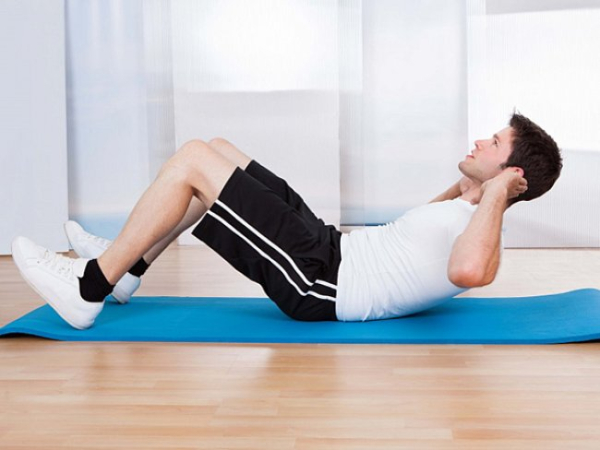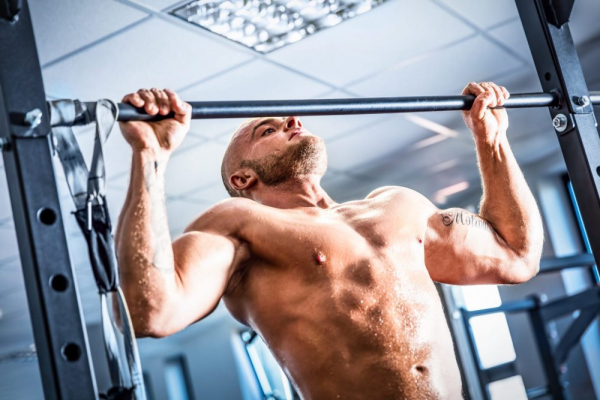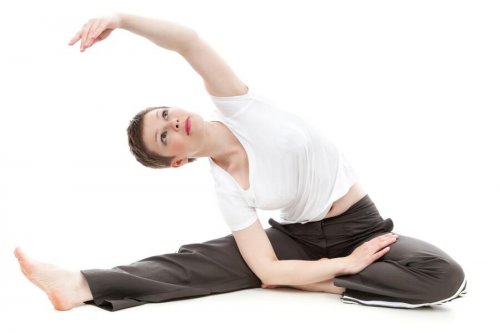
The alarm sounds! Morning has suddenly arrived, and there's nothing you can do about it. You'll have to get up, but how? Your warm bed refuses to let you go, your eyes refuse to open, and your head is still filled with sweet memories of the sandy beach you dreamed about…
Most people lazily throw back the covers, slowly sit on the edge of the bed, and on the second or third try, finally slip their feet into their slippers. Their entire bodies are still asleep, and yet they have to manage to enjoy a bland breakfast in such a state, then jostle for a long time on public transportation to get to work… And work—you have to work! Just imagining it all makes you feel sick.
No more excuses!
What's stopping you from feeling uplifted and physically toned from the very beginning? All you need to do is devote a few minutes to morning exercise. Many people automatically start making excuses, like they're exhausted in the morning anyway, don't have enough time, or even heard somewhere that it's really bad for them. Let's break it down together.
“This morning I feel exhausted and in no mood at all.”
After all, morning exercises are designed to energize the body and lift the mood before a busy day. Physical exercise increases blood flow, allowing muscles, ligaments, and tendons to receive an increased dose of nutrients, which has a beneficial effect on their tone. Once you start moving, you'll immediately feel a surge of energy.
“There's not enough time to recharge”
Do you have enough time to lounge aimlessly on the couch, wander around the apartment, or watch TV? Can't find 5-7 minutes for morning exercises? In the vast majority of cases, claims of a lack of time are simply a mask of laziness. And if a person dares to admit this, even to themselves, then they can consider themselves halfway done. Of course, there are cases when people are truly overwhelmed with work, household chores, and other things from early morning until late at night, but this happens extremely, EXTREMELY rarely.
“Morning exercise is bad for your health.”
This is a question worth exploring in more detail. Any stress on the body can have both a positive and a negative impact. Everything depends on how it's applied correctly. The fact is that the nervous and circulatory systems (including the heart) can't suddenly accelerate without harming their health. They require a preliminary phase to prepare them for the work ahead. If this condition is met, the workout is easy and an additional surge of energy is felt afterwards. However, if a person immediately jumps on a treadmill after sleep, the body has a very difficult time coping with such an overload, so over time the heart weakens, the nervous system begins to slack… And then such a person sits down and writes an article about the harm of morning exercises. Like, they've tried it themselves and know for sure…
Where to start morning exercises?
So how do you do morning exercises to get the most out of them? We offer a fairly simple and straightforward approach to morning exercises.
First, let your body wake up. Get up slowly, wash your face, and feel ready for activity. This usually takes about 10-15 minutes after waking.
Secondly, always begin your workout with a light warm-up of your muscles and joints. Your goal is to saturate your muscles with blood. This will improve their tone and prevent strains.
Third, consider what you want to achieve from your morning exercise. There aren't many options here. Typically, exercise is either a way to wake up (in which case it can be limited to just a warm-up) or a way to tone your muscles (in which case, after the warm-up, you should add stretching exercises, light jogging, and possibly strength training with your own bodyweight). Based on all of the above, your general morning routine should look something like this:
- Woke up.
- WE FELT LIKE WE WERE AWAKENING.
- Warm-up – 2-3 minutes.
- Basic exercises – from 3 minutes.
Warm-up exercise options
These are primarily rotational movements in all the more or less large joints of the body. They are usually performed in the following sequence (but this is not a requirement):
- Turning the head from side to side, nodding up and down, rotating the head.
- Rotational movements of the hands clockwise and counterclockwise.
- Rotational movements in the elbow joints.
- Shoulder warm-up. Arm raises to the sides, scissor movements with the arms in front of the chest, and rotational movements.
- Bend your torso forward and to the sides. Rotate your pelvis alternately in both directions.
- Leg swings forward, backward and to the side.
- Flexion and extension of the knee joint.
- Sitting with your legs extended, rotate your ankles alternately in both directions.
Exercise options for the main part
Stretching and gymnastics:
- Bend forward with straight legs. Try to touch the floor with your palms, and ideally, touch your knees with your chest.
- Sitting on the floor, bend over until your chest touches your knees. You can use your hands to help.
- Lying on your back, touch the floor behind your head with the toes of your straight legs.
- “Bridge”. A regular gymnastic bridge.
- Stand with your feet very wide apart. Squat on one leg, keeping the other straight. Roll from foot to foot, trying to always stay as low in the squat as possible.
- Lying on your stomach, bend your knees, lift your upper body, and grab your ankles with your hands. This position is sometimes called the “Boat” position. Rock like this for a few seconds.
- Lying on your back, bend your knees. Without lifting your shoulder blades from the floor, touch your knees to the floor on one side, then the other.
Come up with your own exercises
You can create your own exercises. Simply choose movements that are comfortable for you and perform them in sets of 3 to 8-10 repetitions. Remember, the goal of exercise is to tone your body and lift your mood. Therefore, your favorite exercises will be significantly more beneficial than those you find uncomfortable.
Incidentally, the Chinese have always been considered the most fanatical exercise enthusiasts. They even have special rooms in their homes where the entire family, including the elderly and children, gather early in the morning, before breakfast, to perform morning exercises together. In suburban China, at certain times (often coinciding with sunrise and sunset), you can see groups of 3-15 people practicing various forms of general exercise or martial arts in almost every park.
Morning exercises should be given special attention, especially by men, for whom they are the only workout of the day. A man should always be physically fit and strong. To achieve this, you'll need to slightly expand the standard exercise routine and supplement it with strength exercises using your own body weight. Essentially, you only need to perform 3-4 of the most effective movements.
Squats. They engage the front of the legs (quadriceps) dynamically and the back (hamstrings) statically. They also engage the glutes, calves, spinal erectors, and a host of other smaller muscles.
Push-ups. They work all the pushing muscles of the upper body: chest, triceps, and partially the deltoids.
Vertical push-ups. How to do it: Stand on your hands next to a wall, raise your torso vertically, and touch your feet to the wall for balance. Bend your elbows and lower yourself until your head lightly touches the floor, then push yourself up explosively. This exercise effectively compensates for the lack of engagement of the middle deltoids during regular push-ups.
Pull-ups on a horizontal bar. Ideal for developing the pulling muscles of the upper body.
These exercises can be combined into a small set and performed immediately after warming up as the main part of morning exercises.
Let's sum it up
Every workout has a mandatory part – a warm-up (2-3 minutes). It's designed to activate all vital processes and prepare the body for the main activity. If your goal is simply to wake up, then you can finish the workout. If you want something more, then following the warm-up, you'll need to perform the main part, which should consist of stretching movements or simple strength exercises (3 minutes or more).






